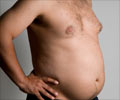Effects of scalp cooling to reduce hair loss in women with breast cancer undergoing chemotherapy was revealed in a study and also looked at the adverse effects.
- One of the significant side-effects of chemotherapy is hair loss also known as alopecia.
- Scientists investigated whether use of a scalp cooling system lowers the amount of hair loss among women receiving chemotherapy regimens for breast cancer.
- Scalp cooling uses a device which is refrigerated and placed on the patient before the chemotherapy session and is not removed or changed until the treatment is completed.
The efficacy of the scalp cooling devices is yet to be assessed in a randomized clinical trial.
In Europe, scalp cooling has been available for several decades, but in the U.S, lack of clearance from the U.S. Food and Drug Administration (FDA) has restricted it’s use.
Chemotherapy is a treatment for cancer that uses drugs to kill rapidly multiplying cancer cells.
Chemotherapy may help to treat cancer, to prolong life or to simply control symptoms.
Hair loss is one of the most common side effects of chemotherapy. Methods generally used to manage chemotherapy include wearing a cold cap in hot sun, warm hat in cold climates, wearing a suitable wig or cutting hair very short.
Two studies published in the journal JAMA examined the effect of scalp cooling treatment on hair loss among women who were undergoing chemotherapy for breast cancer.
Study 1 One study was conducted by Julie Nangia, M.D., of the Baylor College of Medicine, Houston, and colleagues.
The researcher team randomly assigned 182 women with breast cancer undergoing chemotherapy to scalp cooling treatment. Among them 119 received the treatment and 63 were in the control group.
Scalp cooling was done for 30 minutes before and during and 90 minutes after each chemotherapy infusion.
At the end of four cycles of chemotherapy, the hair preservation was assessed.
The results showed that people who received scalp cooling treatment had less than 50% hair loss compared to patients who did not receive scalp cooling. That is, 51% of those in the scalp cooling group retained their hair, compared with 0% of those in the control group.
There were no significant differences in any of the measures of quality of life between the two groups.
In the group that received scalp cooling, around 54 adverse effects were reported none of which were serious.
"Further research is needed to assess longer-term efficacy and adverse effects," the authors wrote.
Study 2
In another study, Hope S. Rugo, M.D., of the University of California, San Francisco, and colleagues assigned 122 women with breast cancer receiving chemotherapy.
Among them 106 patients received scalp cooling treatment and 16 were assigned to the control group.
Scalp cooling was done for 30 minutes prior to and during each chemotherapy cycle, with scalp temperature maintained at 3°C (37°F) and for 90 minutes to 120 minutes afterward.
The average duration of chemotherapy was 2.3 months.
In the group that received scalp cooling, hair loss of 50% or less was seen in 67 of 101 patients (66%) compared to 0 of 16 patients (0%) in the control group.
Also in the scalp cooling group, 3 out of 5 quality-of-life measures were significantly better one month after the end of chemotherapy.
In the scalp cooling group, 27% reported feeling less physically attractive compared with 56% of patients in the control group.
Around four (3.8%) patients in the scalp cooling group experienced adverse events like mild headache and three (2.8%) discontinued scalp cooling due to feeling cold.
"Further research is needed to assess outcomes after patients receive anthracycline [a class of drugs used in chemotherapy] regimens, longer-term measures of alopecia, and adverse effects," the authors wrote.
References:
- Julie Nangia et al. Effect of a Scalp Cooling Device on Alopecia in Women Undergoing Chemotherapy for Breast Cancer The SCALP Randomized Clinical Trial. JAMA; (2017) doi:10.1001/jama.2016.20939
- Hope S. Rugo et al. Association Between Use of a Scalp Cooling Device and Alopecia After Chemotherapy for Breast Cancer. JAMA; (2017) doi:10.1001/jama.2016.21038
Source-Medindia
















